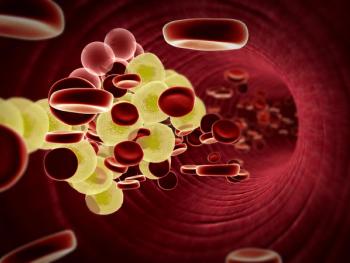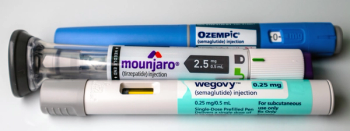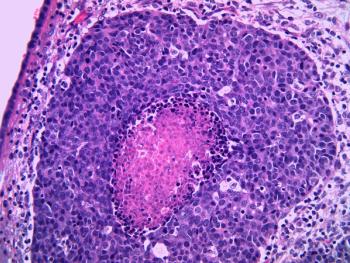
Apixaban Use in Dialysis Patients: A Need to Rethink Dosing?
Apixaban Dosing in Dialysis
Editor's Note: A previous version of this article incorrectly stated that apixaban (Eliquis) has an FDA-approved indication for use in hemodialysis patients. The article should have stated: based on data from apixaban's package insert, patients with atrial fibrillation may receive full dose therapy (5 mg twice daily) while on hemodialysis as long as they are under the age of 80 and weigh above 60 kg.1 If a patient is on dialysis and is above the age of 80 or weighs under 60 kg then the dose is reduced to 2.5 mg twice daily.
Apixaban's package insert states that patients with atrial fibrillation may receive full dose apixaban (5 mg twice daily) while on hemodialysis as long as they are under the age of 80 and weigh above 60 kg. If a patient is on dialysis and is above the age of 80 or weighs under 60 kg then the dose is reduced to 2.5 mg twice daily.1
The dosing adjustments as recommended in the package insert mirror those from the landmark ARISTOTLE trial, which led to the FDA approval of apixaban in 2012.2 Interestingly, HD patients were not allowed to enroll in ARISTOTLE. That raises the question, where did this dosing for HD patients arise from? The answer is a small, single dose (5 mg) pharmacokinetic study of 8 HD patients.3 In the study by Wang and colleagues, the authors noted that after a single dose, apixaban exposure increased by 36% in HD patients compared to healthy subjects without meaningful changes to apixaban half-life. Several limitations exist with a single dose study including the inability to assess accumulation and concentration of drug at steady state. Still, the authors recommended that no dose changes were necessary when dosing apixaban in HD patients.
Recently, Mavrakanas and colleagues published the first study assessing apixaban pharmacokinetics in HD patients at steady state.4 Seven HD patients received apixaban 2.5 mg twice daily for 8 days and concentrations were measured at the beginning and end of the trial. After the trial, 5 patients went on to receive apixaban 5 mg twice daily for 8 days. They found significant drug accumulation with the 2.5 mg dose. In patients taking the 5 mg dose, they found supratherapeutic levels. The authors concluded that the 2.5 mg twice daily dose should be the maximum dose used in HD patients and the 5 mg twice daily dose should be avoided because of high drug concentrations. The authors only enrolled atrial fibrillation patients who would have gotten the 5 mg dose based on weight and age restrictions further adding validity to this study.
The largest clinical study evaluating apixaban use compared to warfarin was a retrospective medical chart review published by Stanton and colleagues.5 When compared to HD patients on warfarin, they found no difference in thrombosis or bleeding with apixaban use. Of note, patients in this study included those with venous thromboembolism along with atrial fibrillation and 20% were dosed inappropriately with apixaban upon discharge. No pharmacokinetic monitoring took place with this study.
Based on the available evidence, it seems like the use of apixaban in HD patients is still an emerging science, but may not fall in line with that of the package insert recommendations. As a result of the pharmacokinetic studies, it would seem that a maximum dose of 2.5 mg twice daily would seem prudent due to accumulation of apixaban at stead state in HD patients. Clinically, although the study by Stanton and colleagues found no differences in outcomes, it is too early to say that apixaban is safe and effective in the HD population. Based on those facts, the drug of choice in HD patients for anticoagulation remains warfarin. If apixaban has to be used in HD patients, a dose of 2.5 mg twice daily would seem to be the best option to use at this time based on the pharmacokinetic data and for the fact that over 60% of patients in the Stanton study received that dose. Current studies being undertaken (NCT02942407 and NCT02933697) will shed light on the use of apixaban in the HD population with atrial fibrillation. It is not recommended to use apixaban in venous thromboembolism in HD patients until more evidence is available.
References:
1. Eliquis [package insert]. Princeton, NJ: Bristol-Myers Squibb; 2016.
2. Granger CB, Alexander JH, McMurray JJ, Lopes RD, et al. Apixaban versus warfarin in patients with atrial fibrillation. N Engl J Med. 2011; 365:981-992.
3. Wang X, Tirucherai G, Marbury TC, et al. Pharmacokinetics, pharmacodynamics, and safety of apixaban in subjects with end-stage renal disease on hemodialysis. J Clin Pharmacol. 2016;56(5):628-36.
4. Mavrakanas TA, Samer CF, Nessim SJ, Frisch G, Lipman ML. Apixaban Pharmacokinetics at Steady State in Hemodialysis Patients. J Am Soc Nephrol. 2017.[Epub ahead of print]
5. Stanton BE, Barasch NS, Tellor KB. Comparison of the Safety and Effectiveness of Apixaban versus Warfarin in Patients with Severe Renal Impairment. Pharmacotherapy. 2017;37(4):412-9.
Newsletter
Stay informed on drug updates, treatment guidelines, and pharmacy practice trends—subscribe to Pharmacy Times for weekly clinical insights.

















































































































































































































